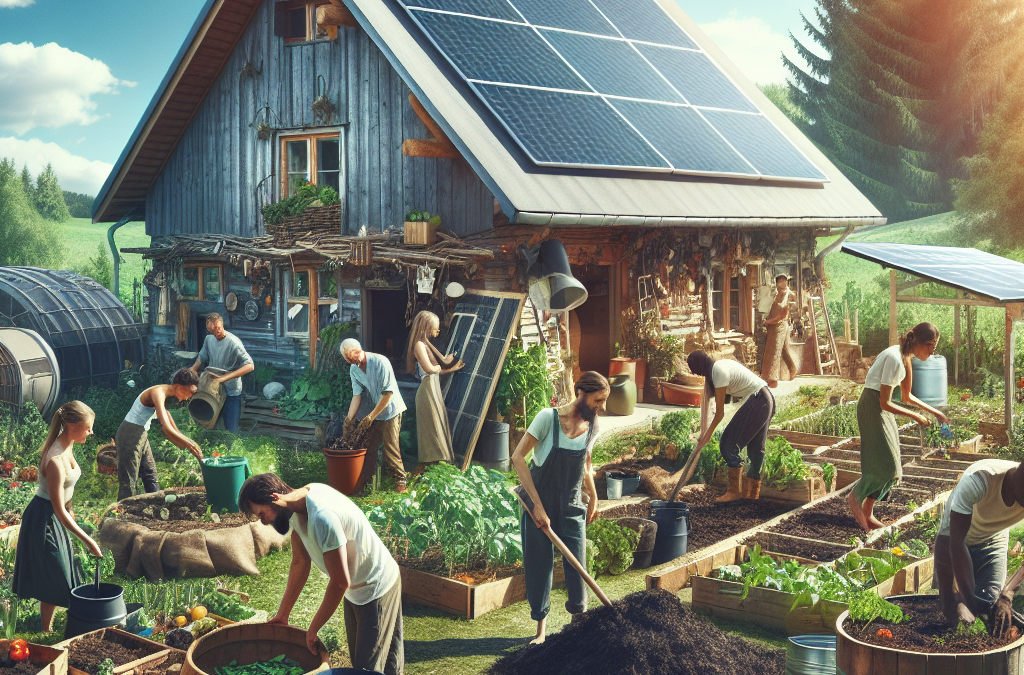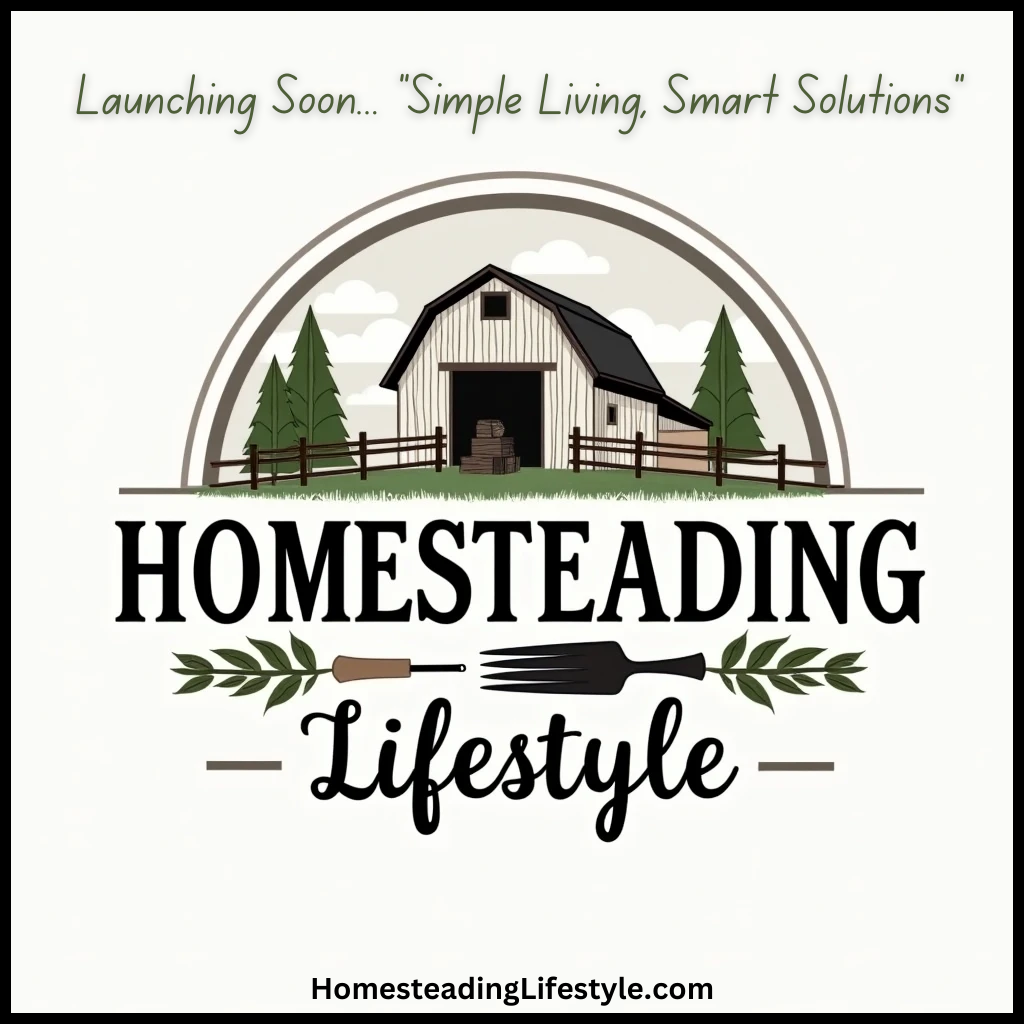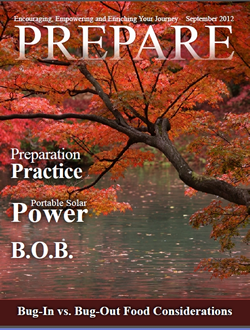1. Understanding Soil Health
Importance of Soil Quality
Soil health is literally the foundation of a sustainable homestead. Good soil allows crops to thrive, which means more food for my family and livestock. I’ve spent countless hours researching how soil organic matter can enhance growth, and let me tell you, it’s true! Healthy soil is alive with microorganisms that break down nutrients, making them available for my plants.
When I first started my homestead journey, I didn’t think much about soil. I’d just plant seeds and hope for the best. Over time, I discovered that adding compost and mulch not only enriches the soil but also helps retain moisture, making it a win-win situation when it comes to resources.
In my experience, a soil test is indispensable. It tells me what nutrients are lacking and what I can add to support my crops better. I found that taking the time to understand my soil has saved me money and increased my yields significantly over the years.
Crop Rotation Techniques
Crop rotation isn’t just for large farms; it’s a game changer for homesteaders too! I love to switch things up in my garden, and here’s why: rotating crops prevents nutrient depletion and helps manage pests naturally. This practice has made my garden healthier overall.
By rotating crops, I’m also breaking the cycle of diseases that can affect specific plants. For instance, if I plant tomatoes in the same spot year after year, I’m asking for trouble with pathogens. By rotating to legumes, which naturally fix nitrogen in the soil, I maintain balance and improve the soil quality.
Planning my garden layout each season has turned into a creative challenge. It’s not just planting; it’s an art form, learning which plants work best next to one another and how to keep my soil happy and productive.
Composting for Better Soil
Oh, composting! It was a revelation for me. Initially, I thought composting was an extra chore, but it became one of my favorite activities. I started small with kitchen scraps and yard waste, and now I have a full-fledged composting system that benefits my garden immensely.
Creating a compost pile is as simple as layering green (nitrogen-rich) and brown (carbon-rich) materials. I’ve learned that keeping it aerated and moist is crucial for decomposition. Plus, turning the pile feels more like an act of love for my plants—every time I do it, I can’t wait to see the magic transform into rich black gold.
My compost not only enriches the soil but also helps mitigate waste. Instead of tossing out kitchen scraps, I turn them into a resource that nurtures my homestead. It’s empowering to know I’m contributing to a circle of growth and sustainability!
2. Water Conservation Strategies
Rainwater Harvesting
Water is a vital resource on any homestead. For me, rainwater harvesting has been a transformative step. Installing barrels under the downspouts means I can collect and store rainwater to use in my garden during dry spells. Not only does it save my municipal water bill, but it also helps the environment!
What I love most about harvesting rainwater is that it feels like a gift from nature. It’s as if I’m in tune with the cycles of the environment. With just a simple setup, I can gather tons of rainwater that would otherwise go to waste, ready for use when needed.
When managing a homestead, every drop counts, and rainwater is as pure as it gets. I’ve used it for everything from watering plants to filling up my livestock’s troughs, and I’ve seen a big reduction in my water usage thanks to this practice.
Drought-Resistant Plants
Choosing the right plants for my homestead has been a huge learning curve. Over the years, I’ve discovered the beauty of drought-resistant plants. These resilient folks thrive with less water and still bring beauty to my space. They require less care, which fits perfectly into my busy homesteading lifestyle.
By planting succulents, native flowers, and herbs, I’m conserving water and time. These plants often require fewer resources, which just makes sense if I want to keep my homestead sustainable for the long haul. Plus, they attract pollinators, which supports the overall ecosystem.
Over time, I’ve seen that embracing the natural landscape means fewer resources are used on my end. It’s about working with nature, not against it—what a joy to find harmony in that!
Drip Irrigation Systems
Another exciting strategy that has changed the game for me is using a drip irrigation system. It’s efficient and makes watering a breeze! The precise watering it provides means I can target my plants’ roots directly, reducing evaporation loss and ensuring every drop counts.
Setting up the system was a fun project; I felt like an engineer figuring it all out! Now, I can leave my garden unattended for a few days without worrying about my plants wilting away. This setup has freed up more of my time for other activities on the homestead.
Plus, I’ve noticed that my plants are thriving better than ever. Thanks to the targeted watering provided by the drip system, my homestead is vibrant and full of life, proving just how beneficial this investment has been.
3. Biodiversity in Gardening
Diverse Plant Selection
Embracing biodiversity is a no-brainer for my homestead. When I first started off, I kind of stuck to the basics—tomatoes, cucumbers, and lettuce. But as I expanded my garden, I learned to incorporate a diverse plant selection to create a more balanced ecosystem.
By planting a variety of crops, I’m not only enhancing the resilience of my garden but also providing different habitats and food sources for beneficial insects. This means fewer pests and a more thriving environment overall. It’s fascinating to see how diversity attracts the good guys while keeping the bad guys at bay!
I’ve discovered that companion planting can combat pests naturally; for example, marigolds deter nematodes and attract pollinators. This knowledge allows me to use my space wisely and dedicates it to beneficial relationships rather than just maximizing yield.
Pollinator-Friendly Practices
Creating a welcoming environment for pollinators has been one of my proudest achievements. Adding a variety of blooming plants ensures there’s something flowering throughout the year. This not only helps my garden flourish but contributes to the ecological balance in my area.
I’ve even dedicated a small section of my yard to wildflowers, which is a simple way to help support local bee populations. Pollinator houses create safe spaces for them, and observing the buzz of activity in my garden is nothing short of magical.
Through these practices, I’m doing my part for Mother Nature while reaping the benefits in my harvests. It’s rewarding to feel connected to nature in this way—it’s about nurturing ecosystems, and everyone’s invited to the party!
Integrating Livestock
Bringing in livestock has added another layer of biodiversity to my homestead. Chickens, goats, and bees are fantastic additions! They not only provide food products but also assist in managing waste and even contribute to pest control. It’s all about creating a well-rounded, sustainable ecosystem.
Setting aside space for chickens has been a game-changer. They help keep pests at bay and provide fertilizer with their droppings. Plus, I get fresh eggs daily—talk about a win-win. Integrating animals into my system has taught me the symbiotic relationships that develop naturally.
I’ve found a balance that works for me and my space while exploring how livestock enriches my garden and life. The more diverse my homestead, the more resilient it becomes, and it’s been a continually rewarding journey to learn and adapt!
4. Energy Efficiency on the Homestead
Solar Energy Systems
Going solar has been one of the most impactful decisions I’ve made for my homestead. Initially, the thought of setting up a solar energy system seemed daunting, but once I did my research, I was hooked! Using renewable sources has cut down my energy bills tremendously.
Plus, there’s something special about relying on the sun for power. It feels good to reduce my carbon footprint and harness nature’s energy. There are so many options out there—from solar panels to solar water heaters—the possibilities are endless!
It was exciting to see the results as I began integrating solar into my daily routine. I’ve gained a newfound appreciation for renewable energy and how it supports both my homestead and the planet. It’s a win for me and for future generations!
Energy-efficient Appliances
When I started upgrading my appliances to energy-efficient models, I was amazed at the difference it made in my energy consumption. Things like Energy Star-rated refrigerators and washing machines often pay for themselves in savings, and I didn’t even realize it at first!
Making these smart choices means less energy is wasted and more money stays in my pocket. Plus, it aligns perfectly with my goal of running a sustainable homestead. I’m contributing to the larger cause without even breaking a sweat!
Each purchase feels like a conscious effort toward a brighter future, for my family and the world. Little did I know that every new appliance would weave a tapestry of sustainability throughout my homestead.
Insulation and Climate Control
Insulating my home has played a huge role in maintaining a comfortable living space throughout the different seasons. It allows me to minimize heating and cooling costs while maximizing comfort. I’ve seen significant improvements since I took the time to address drafts and insulate properly.
Being energy-conscious in my heating and cooling means I can enjoy my home’s coziness without worrying about soaring bills. Utilizing passive solar heating and natural ventilation has allowed me to keep my energy consumption in check while staying comfortable.
Incorporating these systems has not only enhanced my home but has empowered me to live a more sustainable lifestyle. It feels great knowing I’m making choices that benefit my family and the environment!
5. Community Engagement and Resource Sharing
Building a Local Network
Connecting with my community has been an absolute game changer for my homesteading journey. I’ve created relationships with fellow homesteaders, gardeners, and local farmers, and it’s amazing what can happen when you collaborate. We swap seeds, share tools, and exchange knowledge that breeds success!
These local networks have opened doors to new opportunities. I’ve joined trading groups, where we exchange everything from produce to livestock. It’s like a barter system that makes it easier to access resources without spending every dime! Plus, it creates a sense of camaraderie that’s tough to beat.
Being part of a local network not only enhances resource sharing but strengthens community bonds. I feel blessed to have built a support system where we all celebrate successes and learn from challenges together—it’s a beautiful way to cultivate community.
Participating in Local Farmers’ Markets
Farmers’ markets are like a treasure trove of fresh produce and local goods! Participating in these events has allowed me to showcase my homesteading efforts while connecting with my community on a deeper level. It’s fulfilling to share the fruits of my labor with others.
Being at the market is an adventure. I get to meet amazing people who are just as passionate about sustainable living as I am. I have learned about farming practices, preservation techniques, and even picked up some killer recipes along the way.
Plus, I can always find incredible products from local artisans! Supporting small businesses while sharing my journey has made my homesteading experience richer and more rewarding than I could have ever anticipated.
Volunteering and Workshops
Sharing knowledge has been a big part of my journey, and volunteering has become one of my favorite practices. Whether helping out at local community gardens or teaching workshops, there’s nothing quite like connecting with others who are hungry to learn about sustainable practices!
By hosting workshops, I’ve been able to share what I’ve learned over the years, and it has reinforced my own learning. Teaching others about topics like composting or gardening methods is fulfilling, and I love the enthusiasm that emerges from these sessions!
Volunteering has also connected me with amazing people, creating friendships that extend beyond just gardening. It’s heartening to see that we’re all in this together, hoping to make the world a greener and more sustainable place.
FAQs
1. Why is soil health important for sustainability?
Soil health is vital because it directly impacts plant growth, nutrient availability, and water retention. Healthy soil leads to healthier crops and reduces the need for harmful fertilizers, making your homestead more sustainable.
2. How can I conserve water on my homestead?
Implementing rainwater harvesting systems, using drought-resistant plants, and setting up drip irrigation are excellent ways to conserve water effectively. Each of these methods reduces waste and enhances sustainability.
3. What’s the benefit of having diverse plants in my garden?
Diverse plant selection enhances biodiversity, attracts beneficial insects, and prevents pests and diseases. It creates a balanced ecosystem that supports the health of your garden, leading to better yields.
4. How does solar energy contribute to homestead sustainability?
Solar energy reduces reliance on fossil fuels, lowers electricity bills, and minimizes your carbon footprint. It’s a renewable energy source that aligns well with sustainable living practices.
5. Why is community engagement important in homesteading?
Building a local network fosters resource sharing, collaboration, and support among homesteaders. Engaging with your community creates a sense of belonging and facilitates knowledge sharing, making your homesteading journey more rewarding.





